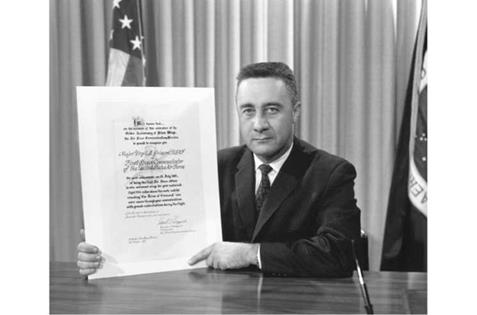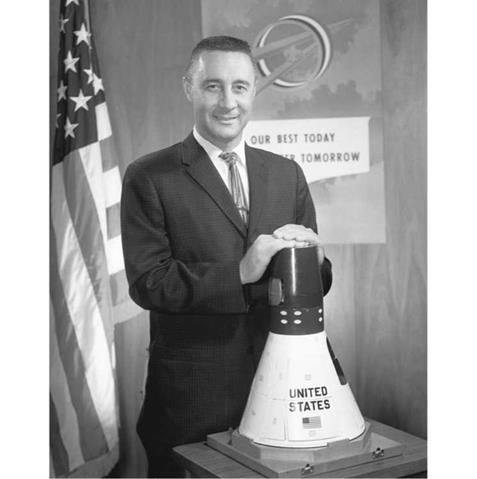GUS AND THE DOCTORS
Gus Grissom admired dedication in most people, but there was one particular profession that caused him to be wary in their presence. Normally outspoken and gregarious people, NASA’s astronauts would readily discuss most things in order to get the answers they sought – except when it came to the space agency’s medical staff. They knew from their days of flying high-performance aircraft that any hint of a complaint relating to their wellbeing could attract the unwanted attention of the doctors.
Prior to his unexpected but ultimately lengthy assignment as a NASA flight surgeon in 1960, Robert H. Moser was an Army major taking a fellowship in hematology at the Utah Medical School in Salt Lake City. As he recalls, little was known at that
|
In October 1963, Grissom was the proud recipient of an award from the Air Force Communications Service in recognition of becoming the first Air Force officer to receive astronaut wings for his flight into space and communicating with ground stations. (Photo: NASA) |
time about a human being’s psychological and physiological capability to endure and function in space. He and his fellow Army officers would get to know the Mercury astronauts quite well over the years, but there was always something of an unspoken chasm between an astronaut and any medical practitioner.
In September 1962 Dr Moser was stationed on the island of Kauai in preparation for the six-orbit Mercury flight of Wally Schirra the following month. Occasionally, he and Gus Grissom would spend time kicking back together in a local bar.
“We had become chums during the seemingly endless simulated missions that always preceded orbital flights,” Moser once reflected for The Pharos magazine. “This was a rare downtime. Gus was our CapCom and I was the medical flight controller. I asked him why flyers hated doctors. He straightened himself on the bar stool, and peered into the bottom of his glass. ‘I’ll tell you, doc. When you walk into the flight surgeon’s office, you have your ticket. When you walk out, you might not.’’’
Moser pressed further. “I asked him, ‘Gus, if you were sitting on top of that big firecracker and the countdown got to about minus seven, and suddenly you felt the worst sort of pain imaginable pressing down on your mid-chest and radiating down the inside of your left arm, what would you do? Would you let us know?’
“Gus took a long moment to gaze at the bay. ‘Only if I thought I was going to die.’”31
|
Gus Grissom with an early model of the Gemini spacecraft. (Photo: NASA) |












